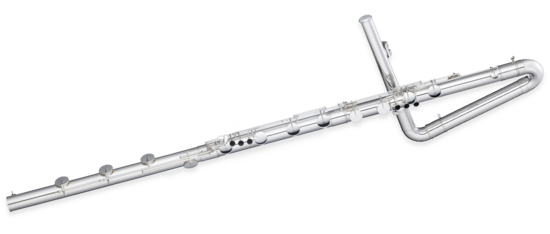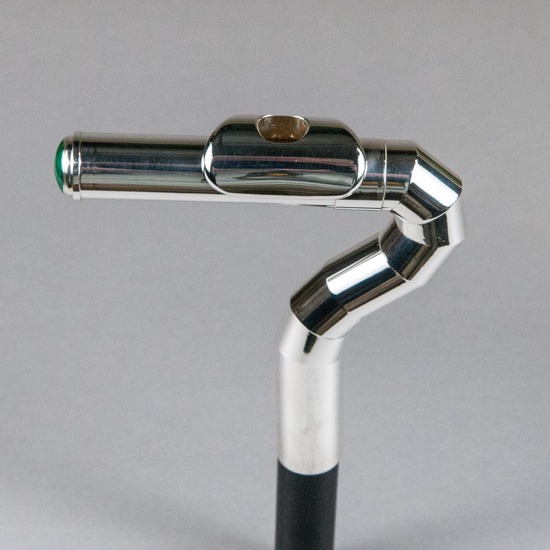The standard (" transverse") flute has pretty terrible ergonomics: your arms are way out to the side. Most woodwinds use a much more natural playing position where the arms are comfortably in front of you, including some (" end-blown") flutes. In the case of the flute, however, this gives a pretty different sound. Could we give up on the simple cylindrical design of the flute to get some thing that sounds like a transverse flute and plays like a transverse flute but is more ergonomic?
Yes! By putting a bend in the head joint it's possible to do just that. This is a common configuration for bass flutes and lower:

Jupiter
JBF1100E bass flute

Pearl PFC-905 contrabass flute
You can get a replacement head joint for a standard concert flute, though it's pricy:
I don't know why this isn't more common? Do people not like that it looks unusual? Katherine Saenger looked into this some (pdf) and claims that the main options for concert flute today don't sound great but better-sounding ones are possible. Has anyone tried these?
